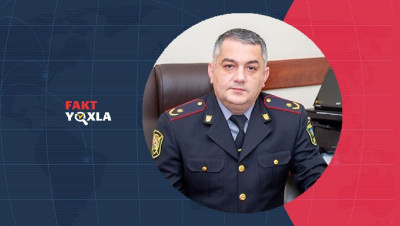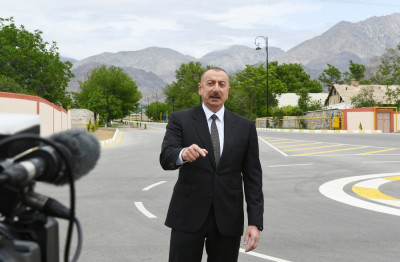Fazail Aghamali, a member of the Committee on Legal Policy and State Building of the Milli Majlis, told Toplum TV that although the activities of peacekeepers are regulated by UN principles, they cannot interfere in fires and the transportation of historical monuments.
"According to the norms of international law, peacekeepers do not have the authority to directly intervene in this matter and prevent it," the MP said.
“The Fact Check” examined whether Fazail Aghamali's claim was true.
According to the tripartite ceasefire statement signed between Azerbaijan, Armenia, and the Russian Federation on November 9, the Armenian armed forces must leave Kalbajar, Aghdam, and Lachin districts by December 1. Aghdam was handed over to Azerbaijan on November 20 and Kalbajar on November 25.
On that eve, local and foreign media published videos about the burning of houses and forests by Armenians who migrated from Kalbajar. Another video shows components belonging to the Khudavang (Davidank) monastery being transported. Fazail Aghamali's statement was related to the interpretation of these footages.
It should be noted that control of the line of contact in Nagorno-Karabakh and part of the Lachin corridor has been transferred to Russian peacekeepers. Peacekeeping operations are carried out under the mandate of the UN Security Council. Over the years, the tasks assigned to UN peacekeepers in operations have been significantly expanded to adequately address the types of conflicts and threats to international peace and security.
The obligations arising from the mandate of the UN peacekeepers and their normative frameworks are reflected in the document of the UN Department of Peace Operations entitled United Nations Peacekeeping Operations: Principles and Guidelines. According to this document, the normative framework for UN Peacekeeping Operations includes the Charter of the United Nations, Human Rights, basic principles of International Humanitarian Law, and Security Council Mandates.
According to the Principles and Guidelines, Peacekeeping personnel must be able to recognize human rights violations or abuse, and be prepared to respond appropriately within the limits of their mandate and their competence.
Damage to nature and the environment is a direct violation of people's right to a healthy environment. The right to a healthy environment was first openly recognized as a fundamental human right at the 1972 Stockholm Conference.
The link between human rights and environmental protection was reaffirmed at the United Nations Conference on Environment and Development in Rio de Janeiro in 1992.
"Human beings are at the centre of concerns for sustainable development. They are entitled to a healthy and productive life in harmony with nature,” said Principle 1 of the Rio Declaration.
If the mandate of Russian peacekeepers was the same as the basic principles of the United Nations, they would have to respond to actions that harm the environment within the scope of the violation of the law. The Principles and Guidelines state that international humanitarian law is one of the normative frameworks for UN Peacekeeping Operations and also includes conventions and treaties on the protection of cultural property and the environment during armed conflict. Therefore, the protection of the environment and cultural property is also the mandate of peacekeepers.
The document explicitly states that peacekeepers are deployed in conflict and post-conflict environments where violence may be ongoing or conflict could reignite. Therefore, United Nations peacekeepers must have a clear understanding of the principles and rules of international humanitarian law and observe them in situations where they apply.
These legal bases show that Russian peacekeepers have the power to intervene in the destruction of the environment and the disjointing and transportation of the components of the Khudavang monastery in the districts abandoned by the Armenians.
“The Fact Check” concludes that Fazail Aghamali's claim is False.













